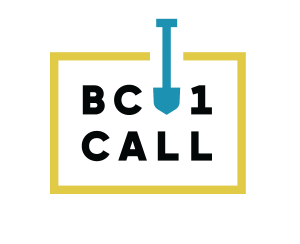Cattle Fencing FAQs
January 6th 2023
At Sparrow Excavation and Fencing, operating out of Lillooet, BC, we have extensive experience installing game and cattle fencing. Over the years, some of the same questions keep coming up in regards to installing effective cattle fencing. Here are a few that we encounter most often:
Can cattle jump?
While they aren’t knowing for their graceful maneuvers, cattle can and will jump when they are motivated enough. In fact, some cattle are known to jump in excess of four-feet. Making sure there is enough feed available within the boundaries of your fence should be enough to keep them from looking elsewhere, but constructing a fence higher than cattle can jump or climb is the most effective way of keeping them safely contained.
How high should my cattle fence be?
Considering cattle can and do climb and/or jump over low fences, fence height should be a minimum of 54 inches.
Are there different types of cattle fencing?
While there are a few types of fencing suited for cattle, at Sparrow Excavation and Fencing we install high-tensile fencing with a fixed knot to keep vertical wires in place. We have experience constructing electrified fencing as well, and will do whatever it takes to keep your cattle safe and secure. If you aren’t sure what type is best suited for your needs, read our recent blog post about the different types, then reach out for a free estimate!
How many strands do I need?
The goal of electric fencing is to discourage predators and train cattle to respect the fence’s boundaries. In a smaller pasture (up to four acres) three to four strands should be enough to teach the cattle to stay away from fencing. Usually one shock is enough to deter further interaction. At least as important as the number of strands is the placement of the strands. Placing one strand at nose height of your cattle will encourage the animals to back up when shocked as opposed to triggering their flight response as can occur when they are zapped on the back of the head or the shoulder. We have experience in building standalone systems as well, utilizing up to nine wires.
How do I install cattle fencing?
While many farmers choose to hire professionals to install cattle fencing, it is possible to do it yourself with some hard work and a little research. Instructions are readily available online and all begin with digging holes for your corner posts. The diameter of the holes should be three times the width of the post. Therefore holes for a fence that is six-feet tall should be at least two-feet deep.
We know how important keeping livestock safely contained is to you and we’re here to help. If you have questions and/or decide to leave your fence installation up to a professional, give Sparrow Excavation and Fencing a call at 250-808-2045. You can also follow Sparrow Excavation and Fencing on Facebook to see some of the awesome projects we’re working on. We’re available BC-wide for excavation and fencing jobs. Check out the Fencing page for more details.

